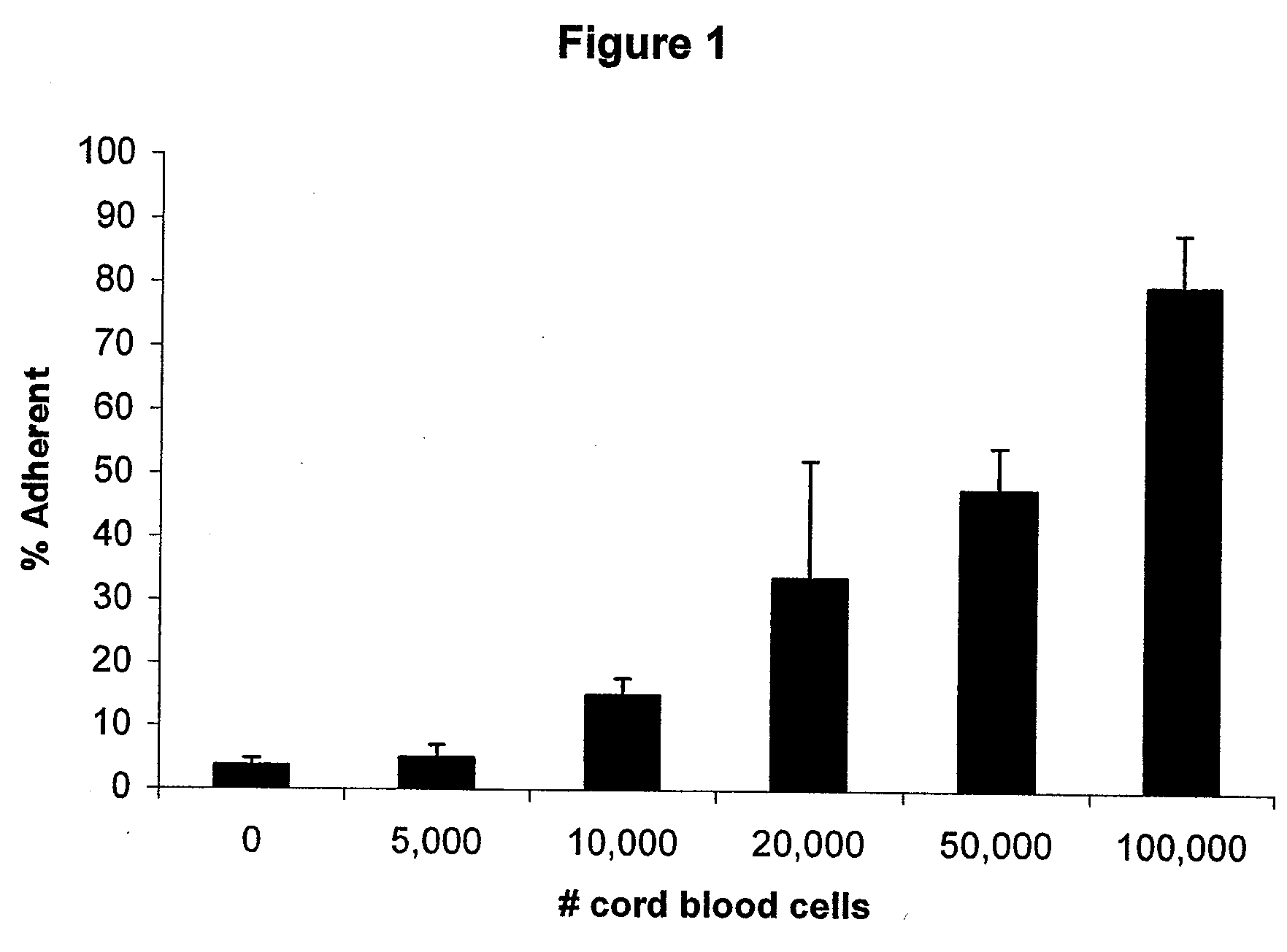Methods of inducing cell differentiation with placental extracts
a placental extract and cell technology, applied in the field of cancer therapy, to achieve the effect of reducing proliferation
- Summary
- Abstract
- Description
- Claims
- Application Information
AI Technical Summary
Benefits of technology
Problems solved by technology
Method used
Image
Examples
examples
[0052]The following examples are offered to illustrate, but not to limit, the claimed invention.
1. CD34+ Cell Purification
[0053]Cord blood was obtained from consenting mothers undergoing cesarean delivery of healthy, full-term infants, and low-density (less than 1.077 g / ml) cells were isolated by centrifugation on Ficoll-Hypaque. CD34+ cell-enriched populations (65-98% CD34+ cells) were obtained by removal of lineage marker-positive cells using a column (n=2); and positive (EasySep) selection using magnetic beads (n=1; StemCell Technologies Inc.). Cells were stimulated overnight for in vivo experiments and for 48 hours for in vitro experiments at densities less than or equal to 2×105 cells / ml in Iscove's medium supplemented with 1% BSA, 10 μg / ml bovine pancreatic insulin, and 200 μg / ml human transferrin (BIT; StemCell Technologies Inc.), 10−4 mol 2-mercaptoethanol, 2 mM glutamine, 100 ng / ml FL (Immunex Corp.), 100 ng / ml SF, 50 ng / ml Tpo (Genentech Inc.), and 100 ng / ml hIL-6 (provide...
PUM
| Property | Measurement | Unit |
|---|---|---|
| molecular weight | aaaaa | aaaaa |
| molecular weight | aaaaa | aaaaa |
| density | aaaaa | aaaaa |
Abstract
Description
Claims
Application Information
 Login to View More
Login to View More - R&D
- Intellectual Property
- Life Sciences
- Materials
- Tech Scout
- Unparalleled Data Quality
- Higher Quality Content
- 60% Fewer Hallucinations
Browse by: Latest US Patents, China's latest patents, Technical Efficacy Thesaurus, Application Domain, Technology Topic, Popular Technical Reports.
© 2025 PatSnap. All rights reserved.Legal|Privacy policy|Modern Slavery Act Transparency Statement|Sitemap|About US| Contact US: help@patsnap.com



